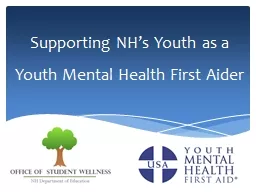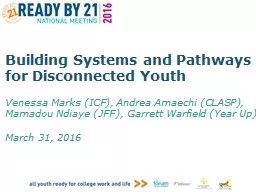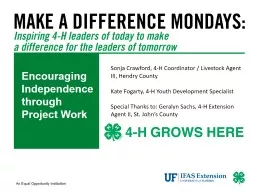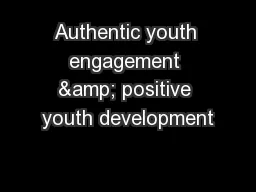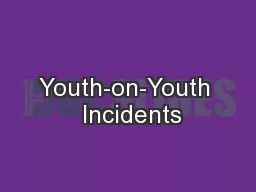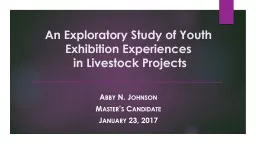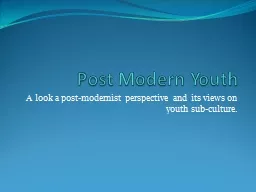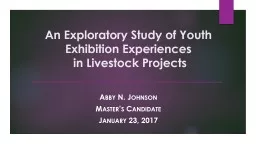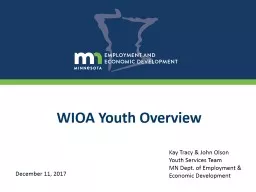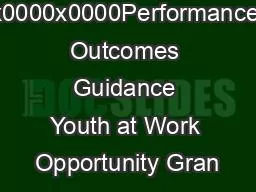PDF-OPPORTUNITY YOUTH
Author : blanko | Published Date : 2021-03-25
A touchstone for our state146s future SEPTEMBER 2017 This report was made possible by generous funding from Other support for the Denver Opportunity Youth Initiative
Presentation Embed Code
Download Presentation
Download Presentation The PPT/PDF document "OPPORTUNITY YOUTH" is the property of its rightful owner. Permission is granted to download and print the materials on this website for personal, non-commercial use only, and to display it on your personal computer provided you do not modify the materials and that you retain all copyright notices contained in the materials. By downloading content from our website, you accept the terms of this agreement.
OPPORTUNITY YOUTH: Transcript
Download Rules Of Document
"OPPORTUNITY YOUTH"The content belongs to its owner. You may download and print it for personal use, without modification, and keep all copyright notices. By downloading, you agree to these terms.
Related Documents



